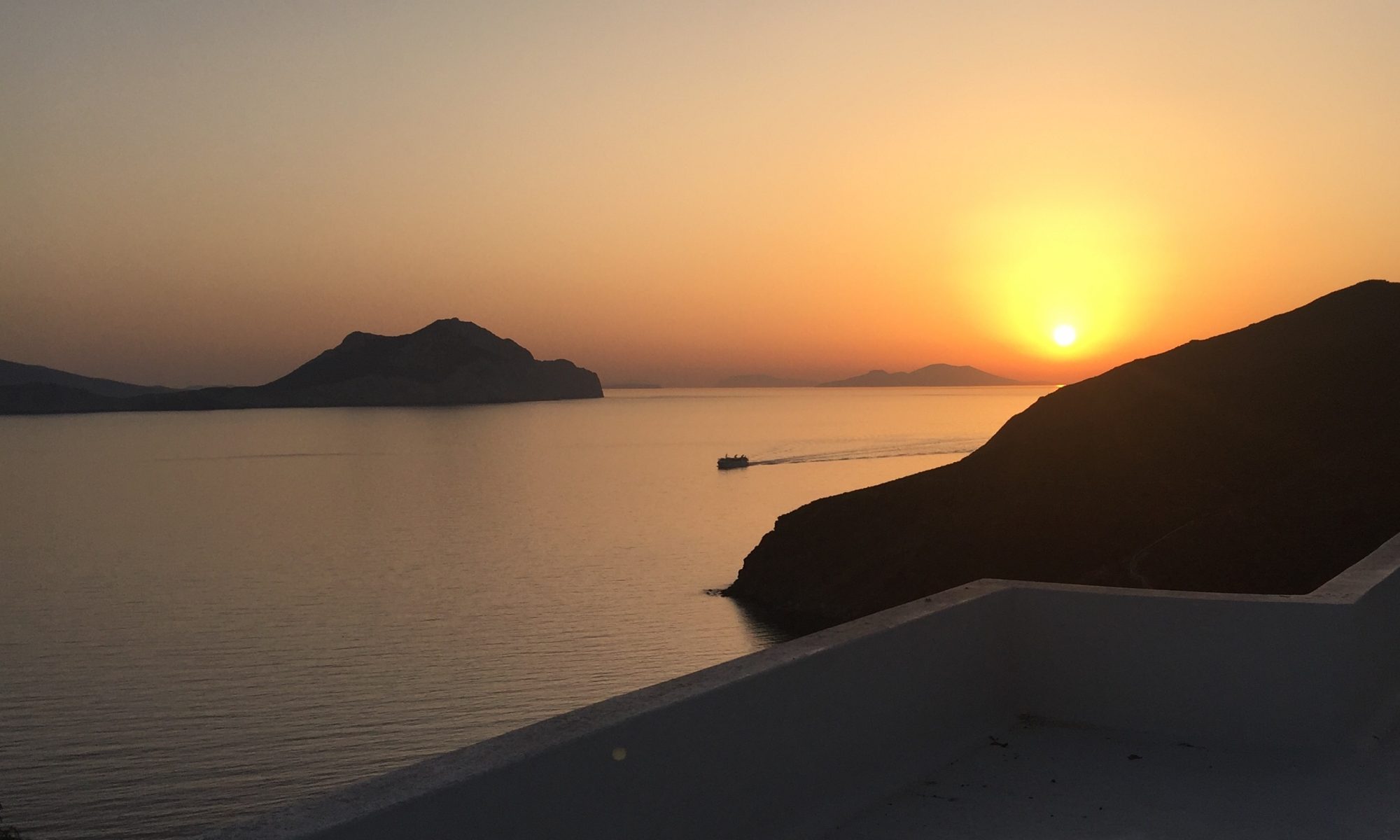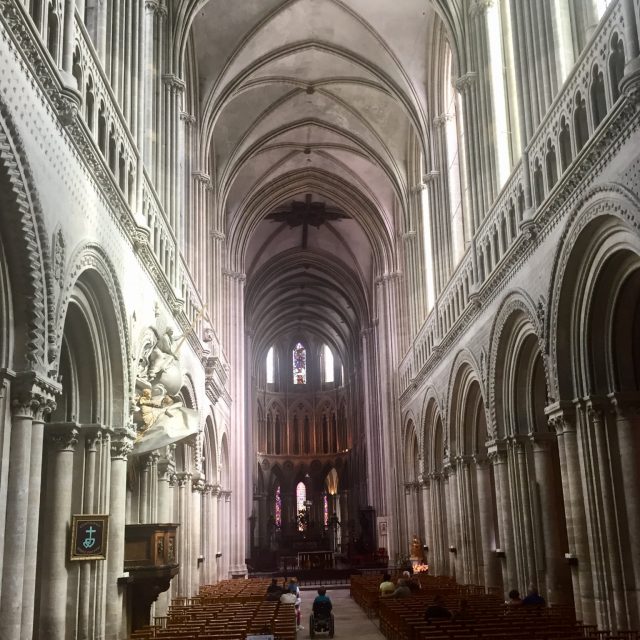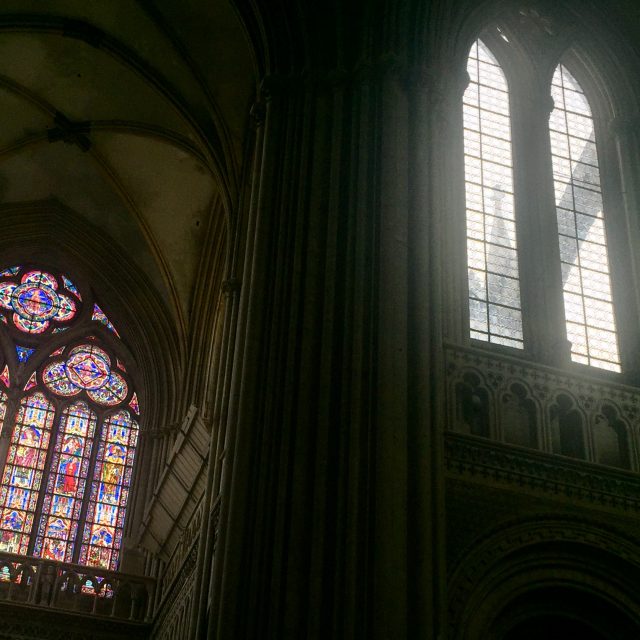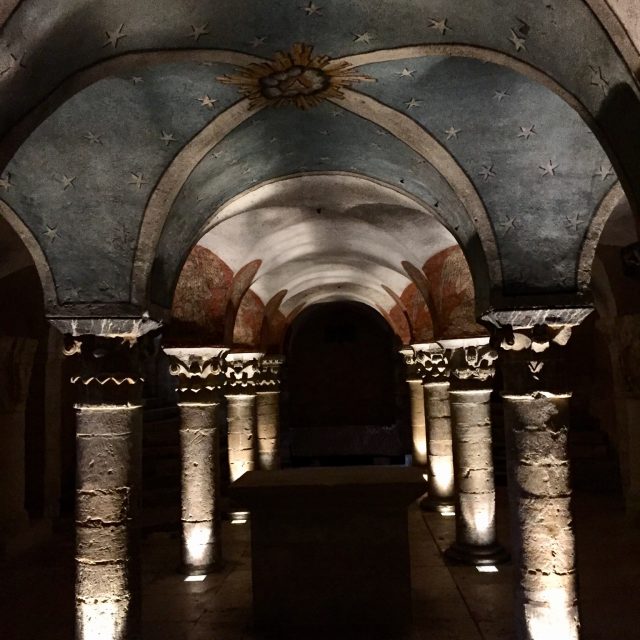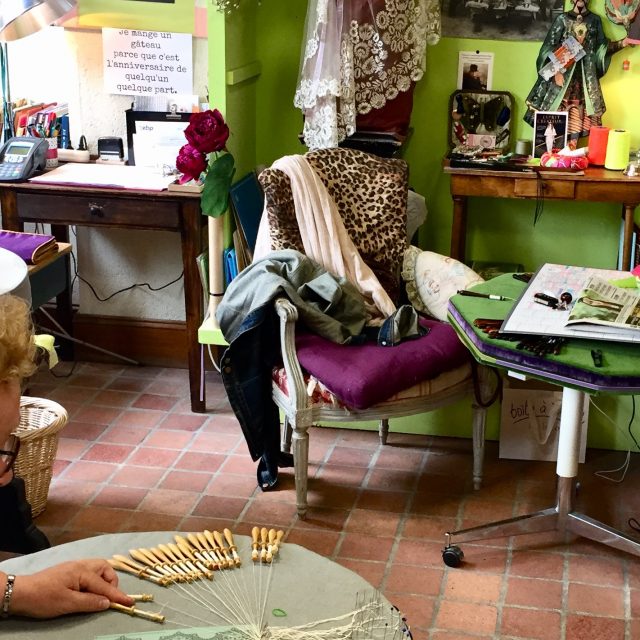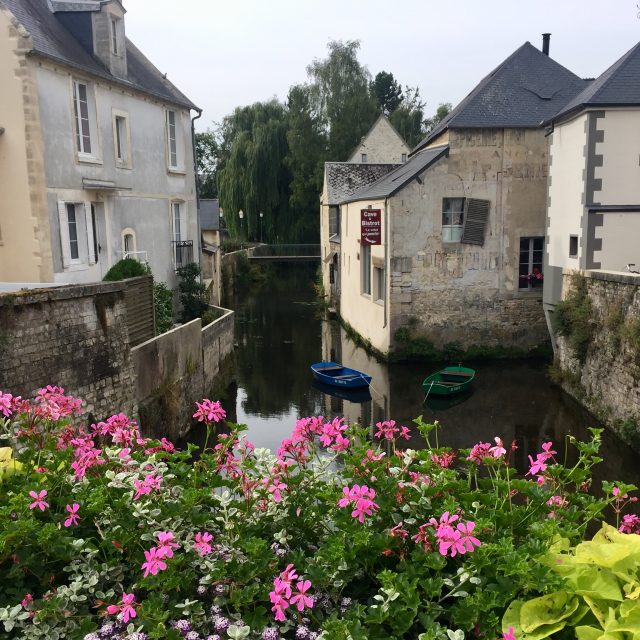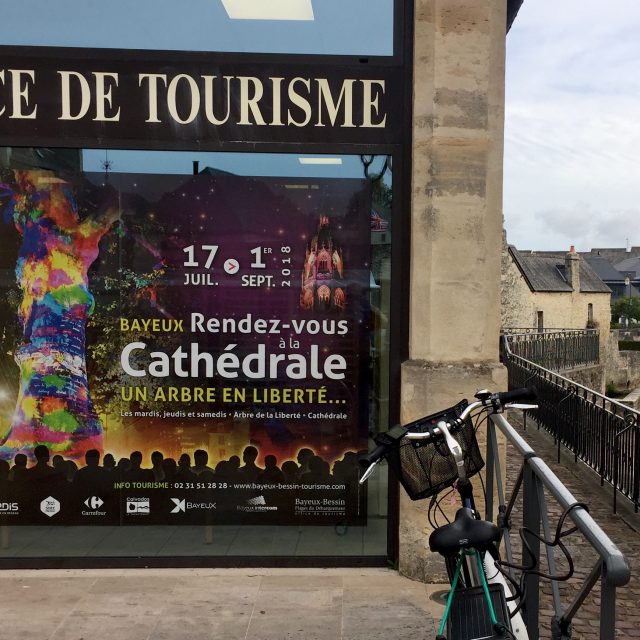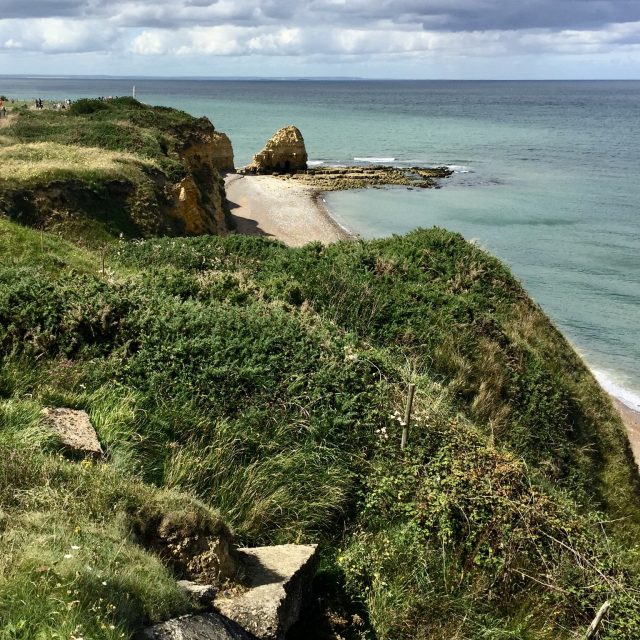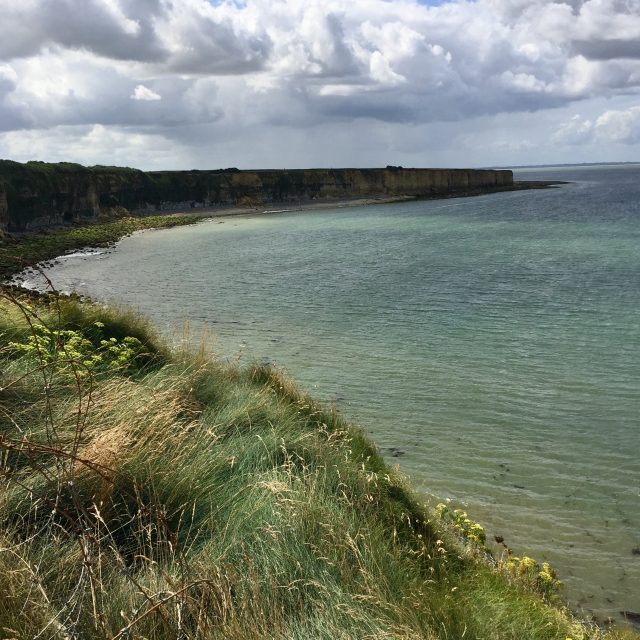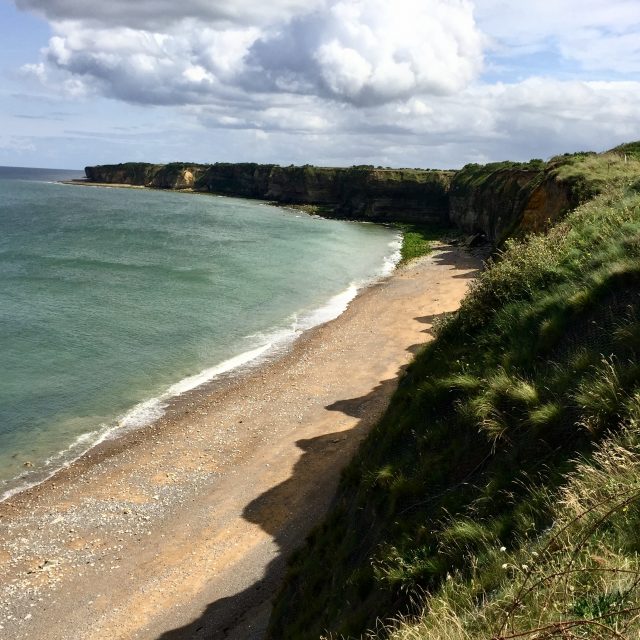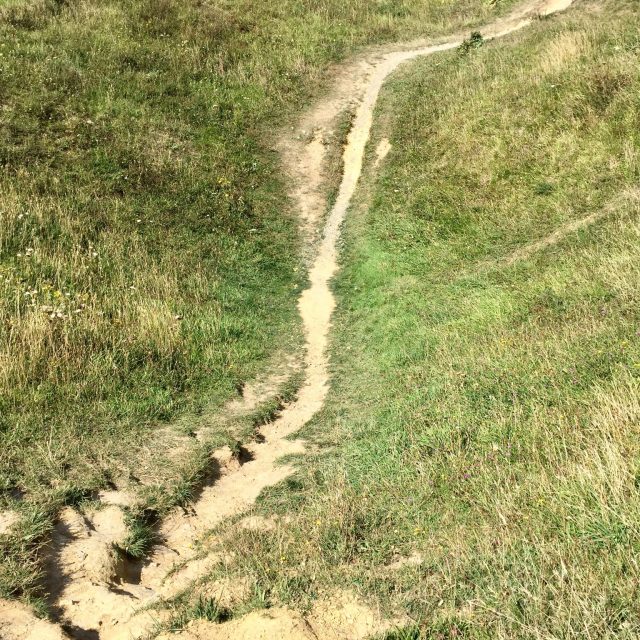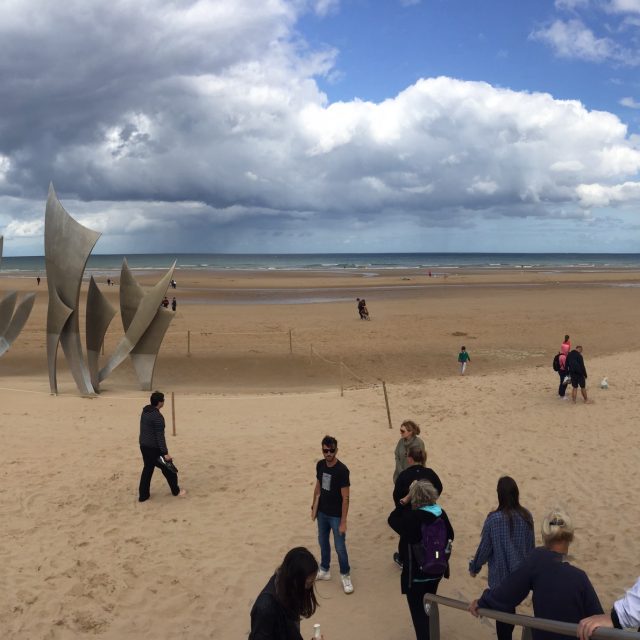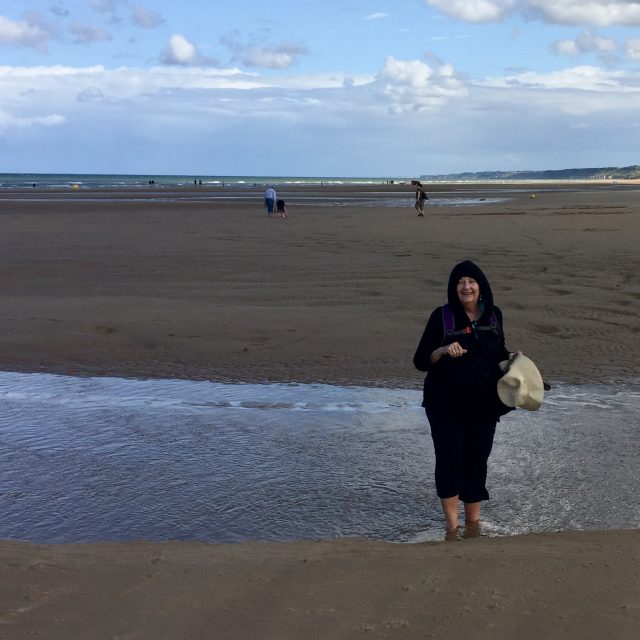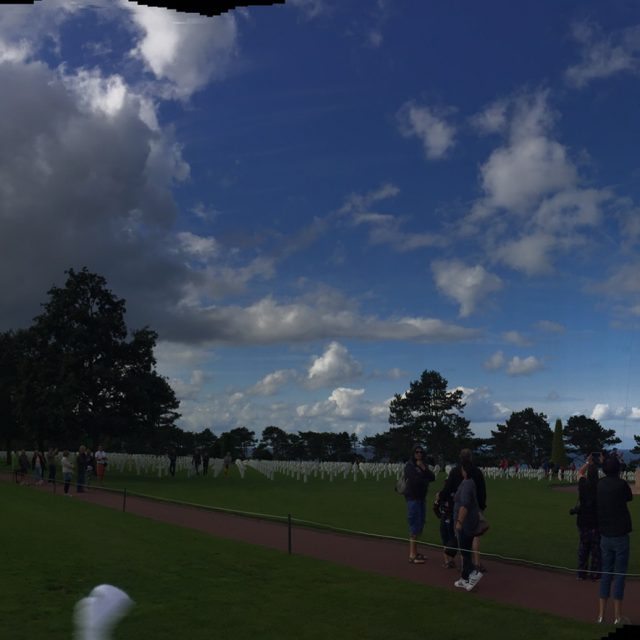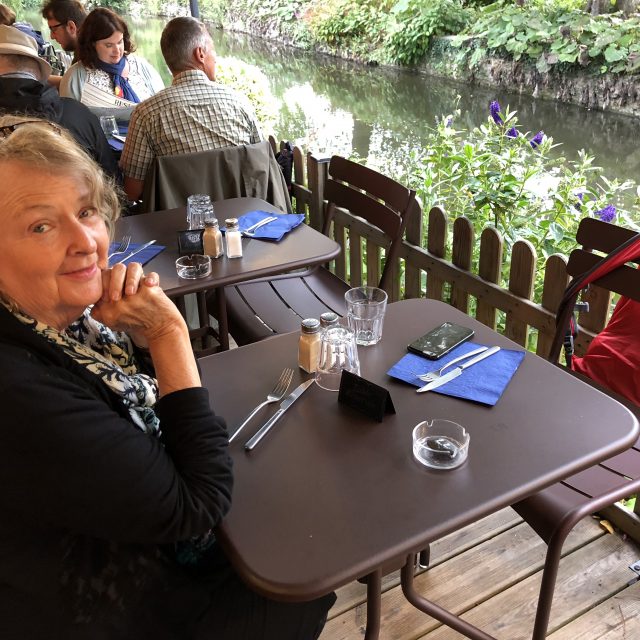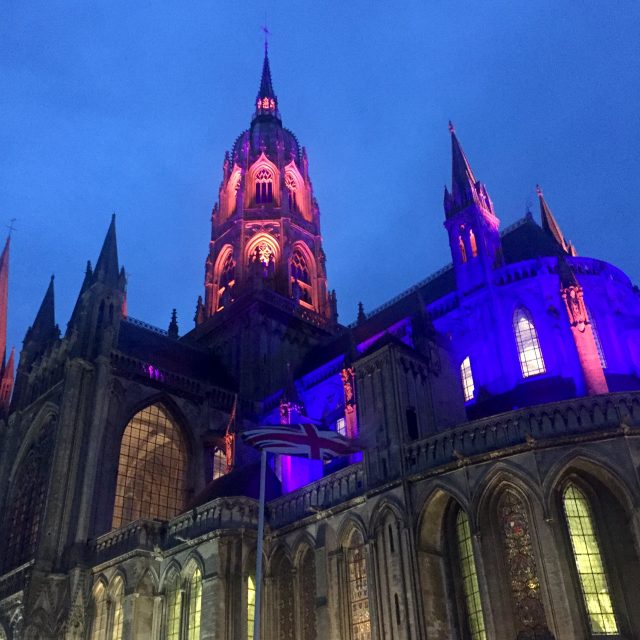HE SAID
Friday 8/24
Normandy Beaches Tour
Adrian was our guide today, one of the most knowledgeable and capable guides we’ve ever had! He reminded me of Nigota, a history professor and Jesuit at Emory, who not only could weave a great story but pack more interesting info into an hour lecture than you could ever imagine.
Our tour of Point du Hoc, Omaha Beach, and the American cemetery and WWII Memorial was one of his 8 specialties as a guide, but probably the one he was most passionate about because of its strong human element.
By the end of each stop, we had a new and much broader perspective of who, what, when, where, how, and why. Especially why the conditions needed for D-Day landings could only happen starting at pre-dawn June 5, 6, 7 (next optimal time late August) and why it ultimately became a success that started to turn the tide.
And why of the two American beachings at points nearly 100 miles south of England, only 48 of ~24,000 died on Utah Beach while 4,500 of ~35,000 died on Omaha (plus that Omaha was almost a lost cause in the early hours!). This versus ~800 fortified Germans, just along Omaha.
Omaha was the deadliest beach; Utah, the safest. Germans backed off Utah due 101 and 82 airborne paratroopers landing and attaching Utah from behind in addition to the more accurate direct approach of allied arial bombings. Less accurate diagonal aerial approaches and no paratrooper diversions at Omaha.
Point du Hoc was the German observation point/point of land for its 155mm long range guns (accuracy out to sea ~10 miles), between Omaha 5 miles to the north and Utah, 5 to the south which 225 special force Rangers also had to neutralize by landing and scaling huge cliffs with >60% losses.
The very efficient Germans had built bunkers and observations points for their long range guns all along the coastline, using enough concrete to build 5 Hoover dams; enough rebar for 135 Eiffel towers!! Catalogued and prepackaged by specific locations as only efficient German engineering might implement! All connected by underground communications wiring.
One big factor was having Patton create a huge diversion by “walking balloons” of tanks and trucks around near Calais much further to the north, a point only 26 miles from England and causing the Germans to focus most of their best forces there, thinking it was the landing point.
Thus, a less experienced German army of conscripts from Eastern Europe with many wooden decoy guns meant to confuse along the D-Day beaches. The Germans had also brought General Rommel in 1944 to shape things up in the area, but he’d only implemented the first of many needed changes. Plus weather was bad on June 5th, and he’d decided to celebrate his wife’s 50th birthday away with her instead of staying on the coast. Moreover, the best German officers were not there to help control the situation. So many little things and plans fell into place by the end for victory.
The D-Day low tide assault at dawn was needed to reveal obstacles/mines. But the Americans under General Omar Bradley almost lost it during the first 2 hours of the assault from the very accurate cross-fire placement of the German guns on the sandy, 4 mile wide Omaha Beach. At dawn’s low tide point of 500 yards out plus another 100 yards further to debark troops from the landing craft, this allowing them to back off and bring in more. The first two waves arrived carrying 60 lb packs, cold, wet, and increasingly demoralized. Most were quickly mowed down by German gun crossfire. 85% losses just in the first two waves! A psychological impact from high losses in the first wave. Bodies to pass with the smell of blood, powder, bodies, dust. Only because the more experienced soldiers were in 3rd wave and beyond, and the fact that the Germans began running out of ammo without experienced officers to control their fire together with Americans gaining positions on the landward side of the German guns, did the Americans gain victory at Omaha by the end of the day.
We began to understand the immensity and the deadliness of the assault by walking out on the sands of Omaha Beach – 4 miles wide, 20% in from low tide with sand running out about 400 yards. Even today in late August, it was cold from the wind chill factor and the cold water of the English Channel.
Our final stop was at the American cemetery. On French soil but run by Americans. Opened in 1956, 9,386 are buried there, the latest found and buried by his brother this past June. 69% Americans were shipped home. All except relatives are randomly buried. Inscriptions on all the tombstones face west to home. The American Memorial there with its reflecting pool like DC’s and the Garden of the Missing became the first WWII memorial in 1956. We watched the lowering of the two American flags at 5pm to Taps.
Bayeux by 6pm for the Normandy Fruites de la Mer starter (fried smelts & mayo, oysters, shrimps, smoked salmon) and a huge canister of steamed mussels for dinner by the river, then a walk by the Cathedral enroute to Logis le Remparts.
SHE SAID
Friday August 24
Pointé du Hoc, Omaha Beach and the American Cemetery
Decided to eat at our B&B today. Delicious cider and the best croissant I have ever had.
Adrian, our guide, picked us up. We were the last of 4 couples in the van. A cute young couple from Chicago, two women down for the day from Paris and a couple from Jackson, Mississippi.
Adrian was a wonderful guide. He talked nonstop the entire trip. Passionate, wanting us to understand the battle, trying to be fair to the Germans. His town was St Lo, one of the many in the region destroyed in the war. His grandfather was captured and was in a camp for most of the war. His 104 year-old grandmother is still alive!
His animated descriptions of the battle at Pointe du Hoc and our exploration of the German bunkers gave us much to think about as we drove to Omaha Beach. Seeing the beautiful beach with all the flags flying, reminded me of the lovely painting by Monet called Terrace at St Adresse, belying the horror of June 6, 1944. There is a great tide variation as at Mt St Michel, so the beach is extremely wide and beautiful. We were there about mid tide. I took off my shoes and walked on the sand as Adrian made us picture the events of that day. Then I saw a little area where the tides had cut out a small stream on the beach. I stood in it! I was in English Channel! A thrill!
Adrian’s explanations helped us understand the reality of that day and the ensuing struggle for the Allies to reclaim France. (I enjoyed his explanation of the Atlantic line and how the German plan was laid out and why it failed.)
Next was the WW2 American Cemetery – beautiful white crosses or stars of David in rows on a brilliant green grass with beautiful green trees and hedges bordering the cliffs that looked out on the English Channel.
Then a mad dash back to the train station for the passengers from Paris to make the 6:15 train.
We walked back to our hotel and relaxed a few minutes before going out to the Crêperie La Moulin de la Galette with a flower bedecked mill by a beautiful river – sort of dreamy but it was very cold – heaters on and cozy throws to help keep us warm!
My buckwheat crepe was thin and crispy – wonderful. And their celebrated homemade fries – yum! Bill had an “appetizer” seafood plate with huge shrimp, oysters, smoked salmon, and fried smelts with an aioli type sauce. More than enough for a meal. Then came the moules (mussels) and frites. About 3X as many as in the US. Somehow, we managed to share a Norman Apple tarte. We were glad for a stroll around before bed.
